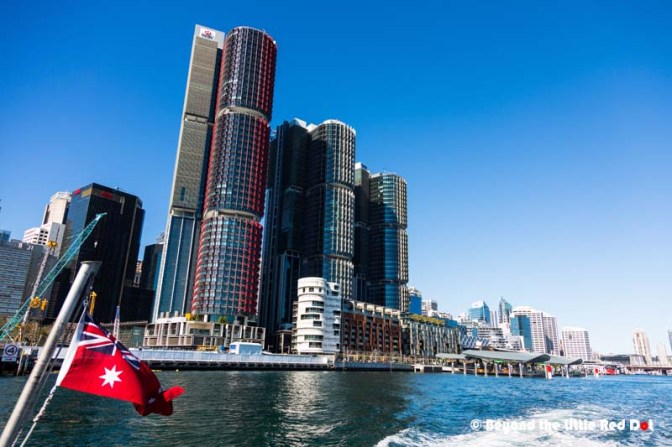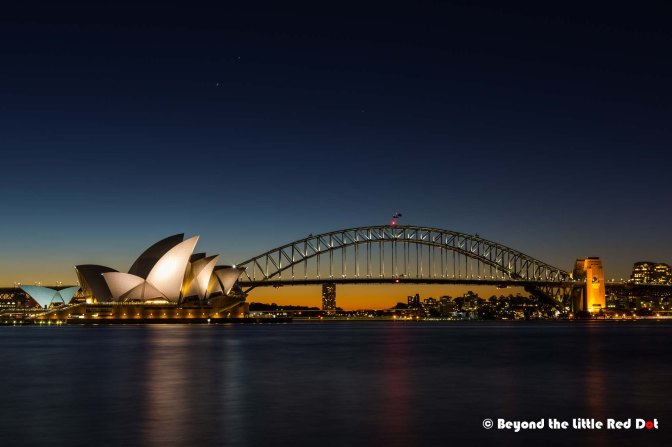Starting off my series of blogs on a recent visit to Sydney is this first post on the city itself. This was my first time to Sydney and expectations were high. After all, the Harbour City has consistently been in Mercer’s Top 10 Most Livable Cities of the world for many years running.
Getting into Sydney
Let’s start off with getting into the city from the airport as this would be the main entry point for most visitors. There are various modes of transportation from the airport to the city, and your choice would really depend on your preference for comfort and time saved.
Taxi- This is probably the most expensive option short of private limousines. Taxi fares to Sydney’s CBD range from AUD45-55 and takes around 20 minutes in light traffic.
Train- The Airport Link train service connects the airport to Sydney Central Station in less than 15 minutes. This is really convenient if your hotel is nearby the station. Otherwise, you can take the train to Central Station and catch a taxi or bus to your hotel from there. However, you will need to purchase an Opal card (transport stored value card similar to our Easylink card) to take the train. The train fare is a minimum of AUD18 depending on where you get off.
Shuttle Bus- There are many private companies running shuttle bus services to Sydney and they do stop (door-to-door) at many hotels and hostels. Fares range from AUD16-25 depending on company. The trip can be rather long since the bus will stop at several stops to let passengers down at their respective hotels. It can take up to 1 hour or more just to get to your hotel. If you are not hard up for time then this option is quite economical for a single traveller. This was the option I took since they did stop at my hotel directly.

For more information regarding getting from Sydney airport to the city, click on this link.
Getting Around Sydney
Depending on where you stay, getting around Sydney is pretty easy. If you are staying in the CBD, then walking is probably your best and cheapest option. It took me 15 minutes to walk from my hotel near Martin Place to Circular Quay. Hyde Park and Darling Harbour were also short walks away.
Otherwise, get an Opal card and use it to take the train, buses and ferries. When you first purchase the Opal card, you will be asked how much you want to top up the card. Top up amounts are in steps of AUD10. When you have exhausted your card amount, you can top up the card at machines located around the train stations and Circular Quay.

Just note that as a tourist it’s not possible to refund any unused amount in your Opal card when you leave (Opal card refunds can only be made into an Australian bank account). So don’t top up too much money into the card and top up amounts are in increments of AUD10. Only top up what you need to spend.
Sydney Central Business District
Long before Singapore had an inkling of an idea to turn Marina Bay into the bustling bay front lifestyle area that it is now, Sydney was already rocking it. Most of the attractions in Sydney are centered around Sydney Harbour and Darling Harbour. Because of this, Sydney has earned the name of the Harbour City.
From it’s early days as a penal settlement, Sydney’s CBD has been the city’s center of commerce and now comprises both historical buildings intermixed with modern sky scrappers. It extends from Circular Quay southwards for about 3km and comprises several suburbs too. Sydney is Australia’s main economic and financial center and some people mistakenly think that it’s also the capital city of Australia. So do you know which city is the capital of Australia? Hint: It’s not Sydney or Melbourne or Perth.





Hyde Park
No, this is not London’s Hyde Park, but a park in central Sydney named after the original in London. It’s the oldest park in Sydney and covers 40 acres.

St Mary’s Cathedral
Located at the northern end of Hyde Park is St Mary’s Cathedral. Although the church started construction in 1868, the building was not finished until recently in 2000.


Royal Botanic Gardens
This is located between the CBD and Opera House with a stunning view of Sydney Harbour. Opened in 1816, the Royal Botanic Gardens is the oldest scientific institution in Australia. It’s free to enter the gardens but it closes in the evenings. I found that this was a great place to relax with nature after touring the Opera House area.


Sydney Harbour Bridge
Easily the most recognizable landmark in Sydney besides the Opera House is the huge steel bridge that connects Sydney’s CBD to the northern suburbs. The mammoth structure carries vehicles, rail, and pedestrians. On top of that, you can also climb the bridge, which will bring you 134m above the waters of Sydney Harbour.




Sydney Opera House
The other landmark that has probably come to symbolize Sydney is the Opera House. No other city has the iconic look of the bridge and the sail like structure of the Opera House.




Darling Harbour
This is another smaller harbour adjacent to Circular Quay. It is a major entertainment area with attractions like the Sydney Aquarium, Wildlife World, Madame Tussauds, Maritime Museum, casino and shopping centers. This would be the place to go if you are traveling with kids and want to them to be entertained.


For myself, I didn’t spend much time in Darling Harbour as I was passing through it to get to the Sydney Fish Market.
Sydney Fish Market
Sydney is not just about the bridge and Opera House. It has also come to be known as a foodie’s paradise. Being by the sea, seafood is one of the main attractions of coming to Sydney. And nowhere is it better to eat fresh seafood than at the Sydney Fish Market.





Harbour Cruises
Besides being stuck on land, you can take cruises and ferries for sight seeing or getting around. I decided to book a harbour cruise with Captain Cook Cruises. No particular reason why since there are several cruise companies that operate from Circular Quay. Of course the fact that they offer free cruises if you sail on the week of your birthday did play a big part in choosing them (Yes, I’m a sucker for freebies).



Ok, you don’t want to spend money on a cruise (it can be expensive if you have a family) and it’s not your birthday so you can’t get a freebie. But you want to experience sailing in Sydney Harbour. No sweat! Take the public ferries with your Opal card. This is probably the cheapest way to cruise and see the sights from a boat.


I took a public ferry from Barangaroo (next to Darling Harbour) to Circular Quay and it cost me AUD5+ for a 10 minutes ride which brought me under the Sydney Harbour Bridge and past the Opera House.
Night Scenes
When the Sun goes down and the lights come on, Sydney does take on a magical appearance. There are places where you can get that iconic postcard shot of Sydney all lighted up.





That’s all for my first post on Sydney and I will be publishing several other posts on what else you can do in and out of Sydney. So stay tuned.
Absolutely love Sydney. We have family there so we have visited many times. Much more touristy than Melbourne and so many great sights to check out. 😉
I can see why people love Sydney.
It’s a lovable city indeed. 😊
What stunning photos, Edwin! Looking at those really makes me want to go back sooner than later.
Thank you. It certainly was a joy taking photos in Sydney.
Great photos. And I found the texture/ tiles fun fact about the Opera VERY interesting. Who would have know?
Yup. I always thought it was just a smooth concrete surface.